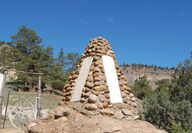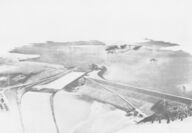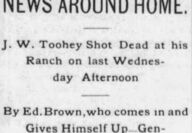Sorted by date Results 1 - 8 of 8

www.redshalereflections.com After the shock of Custer's defeat at the Little Big Horn, efforts to memorialize the physical site of the Last Stand soon began. The site's first memorial (made of cordwood) was erected in 1878. The National Cemetery was designated in 1879, and the marble obelisk that stands today was built in 1881. These efforts demonstrated the Custer defeat's profound impact on the American government and the white American populace. Such dramatic effort to physically memorialize...

The word "remount" as a modern word is a verb, meaning "to get back on [something] and ride it again." But if the term was heard during any period before the 1950's, another meaning would likely be applied. This version of "remount," a noun, referred specifically to military horses and their replacements, usually during times of war. The provisioning of military horses in the Western United States, particularly Eastern Montana, has a rich, colorful history that has been well documented. Many...

It was the summer of 1936 when Hollywood disrupted the usual tranquility of Montana's lower Tongue River. Paramount Pictures was filming an epic western, "The Plainsman," and legendary director Cecil B. DeMille wanted to include authentic landscapes and action scenes for the film. To that end, the production chose to film some of its most essential segments along the Tongue River in southeastern Montana, near Birney. DeMille's desire for authenticity in the background elements of the film was...

In two previous columns, I described the unsuccessful effort to build a dam on the Powder River three miles south of Moorhead during the 1940s. My first column outlined the general history of the project as the Reclamation Bureau prepared for the structure's construction. An initial congressional appropriation of $900,000 (in 1947) included the creation of a base camp for engineers and workers. My second column described how the opposition, based primarily in Wyoming, organized themselves and...

In 1886. the town of Birney was not located at its present location at the mouth of Hanging Woman Creek. The Birney post office was then located several miles south of present-day Ashland, which was then known as "Strader." The office was located concurrently with a trading store operated by the postmaster, John W. Toohey. Toohey was Birney's second postmaster, the first being trader A.M. Birney, for which the town was named. In March 1886, Mary O'Connell, the wife of Custer County Assessor...

Find more from Shane at www.redshalereflections.com (Ed: A ghostly article presented by history columnist Shane Dunning for our Halloween week edition. Enjoy.) In January 1903, "a gentleman who has long resided in Rosebud County and spoke in all seriousness" gave a curious interview to the Billings Gazette. No, I'm not joking; neither have I become locoed by the many ghost stories of a political nature that have been sent out from our country. Thirteen years have passed since it first became noi...

On Sunday, June 2nd, 1907, Rosebud County Sheriff Robert J. Guy was alerted by Forsyth resident James Anderson that three horses had been stolen from his pasture. Anderson discovered the trail of his stolen horses three days later, six miles southwest of Forsyth. That next morning Sheriff Guy deputized Anderson and the two began a chase that ended with the formation of a posse, one man's death and inglorious burial, and another's daring escape and later arrest. The two lawmen left Forsyth the...

On the early winter morning of January 16, 1927, Charley Flory got on his horse and left his homestead on Anderson Creek near Decker in Southeastern Big Horn County, Montana. He was headed to the house of his father-in-law, E.T. Ostrum, who coincidently also went by the name "Charley." The sixty-five-year-old Ostrum worked as a ditch-digger and was an immigrant from Sweden. The 35-mile trip at a horse-friendly pace would take two days during cold winter weather with at least one river crossing....